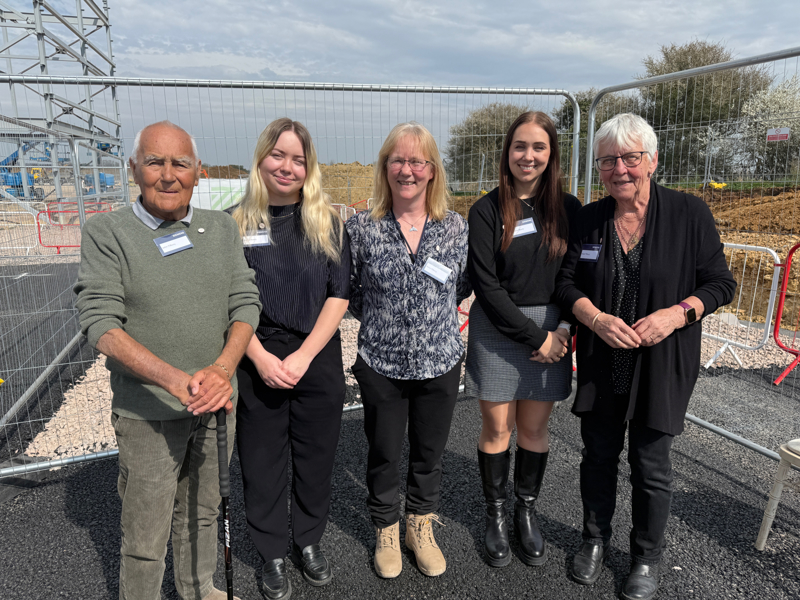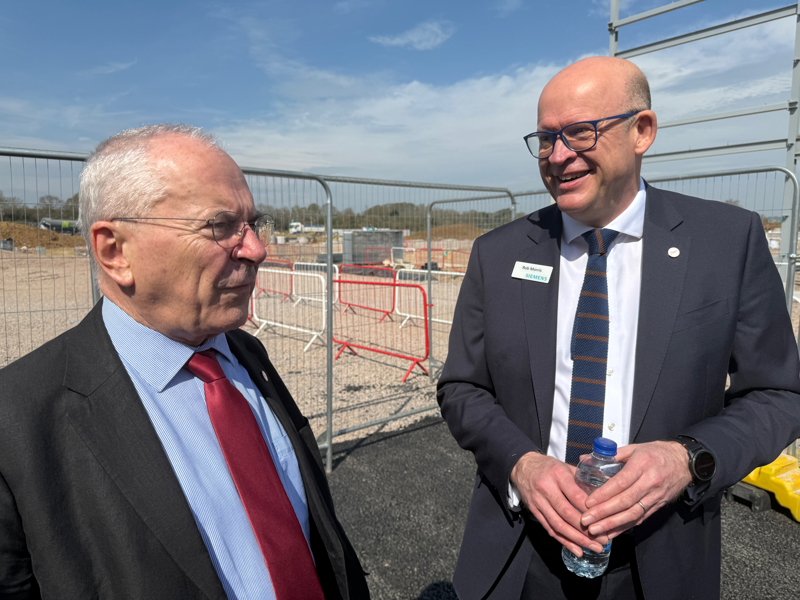
Construction is under way at the site of a new factory for Siemens Mobility, on the outskirts of Chippenham in Wiltshire.

Construction is under way at the site of a new factory for Siemens Mobility, on the outskirts of Chippenham in Wiltshire.
“It will be fresh,” said Amber Rawle, a 21-year-old degree apprentice, after walking round the construction site.
“It’s very exciting, with new research and development facilities.”
Amber is the fourth generation of her family to work for the business. Sister Yasmin, who works as a strategy analyst, said: “I was offered a good graduate scheme, and I stayed.”
Mum Anne Tilbury, a production team leader, interrupted with obvious pride: “Well, you started with a summer job while you were still at college, and worked your way up.”
Grandad John Tilbury has a longer perspective: “Before, when it was Westinghouse, it was really the only big employer here. At the peak, there were 8,000 people. Then it gradually dropped down to 800 today.”
At the formal launch of construction (groundwork actually started months ago), Granny Hazel Tilbury (she has retired from Network Rail) tried to count how many family members work on the railway. It is fair to say that most of the wider family all do - the Chippenham site has a long tradition of encouraging families to work there.
Rail Minister Lord Hendy visited the greenfield site, off the A350 road close to Thingley Junction.
When the £100 million site opens in 2026, staff will transfer from the existing Chippenham factory, not far from the station. They will build conventional and digital signalling and control systems, as well as telecoms, alongside a research and development facility.
The company said it will be a “cornerstone” for future projectsin rail technology.

“The current site has been there since 1897,” said Siemens Mobility Joint Chief Executive Rob Morris.
“It has served us well, but it is most definitely time for an upgrade. We are moving into new digital technology now. We need something that represents the future, and helps people have that innovative and creative space.”
It will be one of three Siemens manufacturing sites in the UK. The others are at Ashby-de-la-Zouch and Goole.
Chippenham signalling is installed on London Underground’s Victoria and Central lines, and on the Elizabeth line. Its electrical relay switches are used for train detection and power supply control. More than two million relays have been sold to 95 countries.
After more than a century building mechanical interlocking, it is now producing computer-based digital signalling for use on the East Coast Main Line.
Siemens has also just signed a large contract for HS2, and is involved in the Transpennine Route Upgrade.
But the Chippenham investment comes in a period of uncertainty.

The latest Railway Industry Association survey showed 85% of its member companies expect either a hiatus or a cut in investment during 2025, and the wider Siemens business has also made cuts.
“This government says its first priority is growth,” said Morris.
“Growth requires infrastructure that works. Too much of the railway is degrading at a faster rate than it was. That’s not sustainable.
“Yes, the last year has been quite challenging. But with adversity always comes opportunity. It pushes us into a ‘needs must’ situation. And normally when needs must, things get delivered.
“If we do not invest correctly, there will be bottlenecks in the network. What is happening with Great British Railways is about the need for a more efficient country that can grow, and we suggest there is a broader way of bringing in investment from other parties.”
Siemens at Chippenham
The original factory in Chippenham was established in 1897 by signalling contractor Evans O’Donnell, later joined by Saxby & Farmer.
It was taken over by Westinghouse Brake and Signal in 1920.
Following several changes of ownership from the 1970s, Siemens bought the signalling business in Chippenham in 2013, and the brake part of the company in nearby Melksham is now run by German business Knorr Bremse.
- 50%-60% of factory output is delivered to UK signalling projects. The rest is exported to customers worldwide.
- Siemens trains make up almost a quarter of the UK passenger fleet.
- Its cab radios are on every train in the UK, except on HS1.
- It works with 2,500 suppliers, of which more than 90% are UK-based.
Login to continue reading
Or register with RAIL to keep up-to-date with the latest news, insight and opinion.


















Login to comment
Comments
No comments have been made yet.